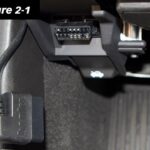Experiencing a no start, no crank situation with your 2010 Subaru WRX can be incredibly frustrating, especially when accompanied by a lack of OBD2 communication. This combination of symptoms points to a deeper issue than just a dead battery or a simple sensor malfunction. As an automotive repair expert at techcarusa.com, I’ve encountered this perplexing problem numerous times, and it often leads owners down a rabbit hole of parts swapping without resolving the root cause.
One of the common culprits, and often overlooked when there’s no OBD2 response, is the crankshaft position sensor. A faulty crank sensor can prevent the engine from starting and cranking because the engine control unit (ECU) doesn’t receive the necessary signals to initiate the ignition and fuel injection sequences. Without a proper crank signal, the ECU remains unaware of the crankshaft’s position and speed, effectively halting the starting process. Furthermore, in some no-crank scenarios related to sensor failures or deeper electrical issues, the OBD2 system might not initialize properly, leading to a “no communication” error when you plug in your scan tool.
While the crankshaft sensor is a prime suspect, the camshaft position sensor should also be considered. Although less frequently the sole cause of a no-start, no-crank condition, a malfunctioning cam sensor can contribute to similar issues. Both sensors work in tandem to provide crucial timing information to the ECU. If either sensor fails or provides erratic readings, the ECU may prevent the engine from starting to protect it from potential damage.
It’s crucial to resist the urge to blindly replace parts. Instead, a systematic diagnostic approach is essential. Referencing a Factory Service Manual (FSM) for your 2010 WRX is highly recommended. The FSM provides detailed troubleshooting steps and wiring diagrams to accurately pinpoint the source of the problem.
Before diving into sensor replacements, consider these fundamental checks:
- Battery and Electrical System: Even though you have a “no crank” situation, ensure your battery is properly charged and that battery terminals are clean and tightly connected. Check for any blown fuses related to the engine management system and ECU. A weak battery or poor electrical connection can cause a multitude of issues, including no OBD2 communication.
- Timing Belt/Chain: While less likely to suddenly fail and cause a no-crank after the car was running, a jumped timing belt or chain is a possibility, especially in older vehicles or those with overdue maintenance. If the timing is significantly off, the engine won’t start, and it might also affect sensor readings and OBD2 system initialization.
It’s also worth mentioning the green diagnostic connectors located under the dashboard in many Subaru models. These connectors are intended for dealership diagnostic purposes and ECU reflashing. If these connectors are inadvertently plugged in, they can cause unusual electrical behavior, potentially contributing to a no-start condition and other electrical anomalies. Ensure these connectors are disconnected during normal operation.
Remember, the OBD2 system is a valuable tool, but it’s not the solution to every problem, especially in no-start, no-crank scenarios. The absence of OBD2 communication in this situation is a symptom itself, guiding you towards focusing on fundamental electrical and sensor issues that prevent the ECU from even initializing.
In conclusion, when facing a “2010 Wrx No Start No Crank No Obd2” situation, prioritize a methodical diagnostic process. Start with basic electrical checks, suspect the crankshaft and camshaft position sensors, and consult your Factory Service Manual. Avoid guesswork and random parts replacement. By systematically investigating, you’ll be much more likely to identify and resolve the true cause of your Subaru’s starting woes and get back on the road.
